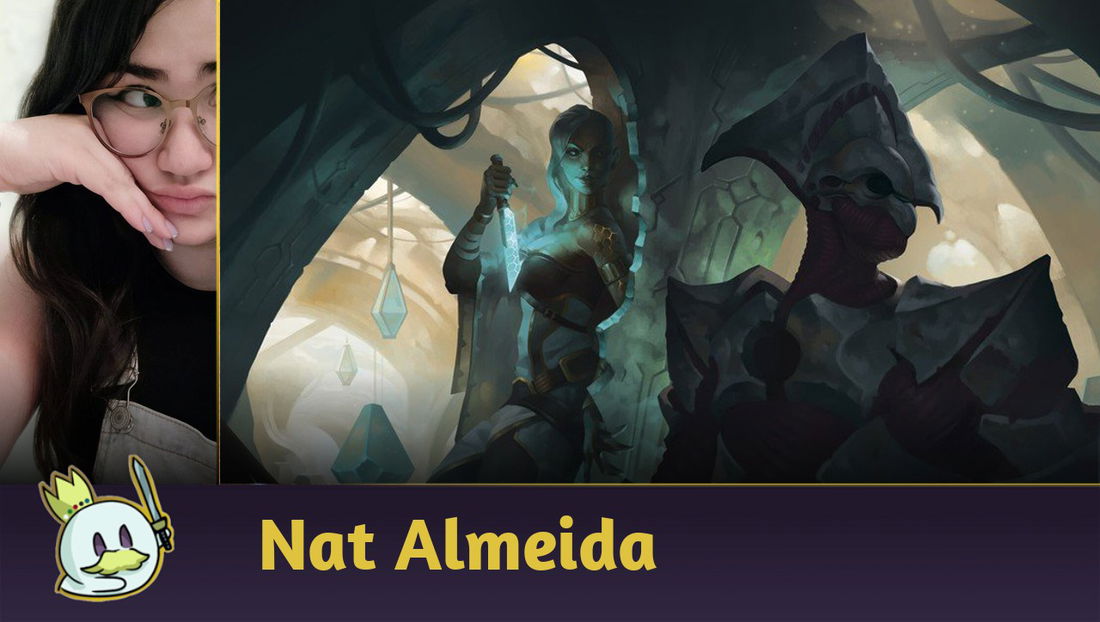Bloomburrow is coming, and with the new Magic: The Gathering set, the Standard season also begins, where Innistrad: Midnight Hunt, Crimson Vow, Kamigawa: Neon Dynasty and Streets of New Capenna leave the format to make room for future releases.
The rotation is usually one of the crucial moments of the format, and also one where players usually require more investment in the new set or in cards that are not in their collection to test new lists.
But this does not mean that players always need to wait to get their cards, and the first results of the "new" Standard have already appeared on Magic Online Challenges, where Bloomburrow is not yet available, but the rotation has already happened and gives us a first look at what awaits us with the new set.
In this article, we discuss the most popular decks from this week's Challenges and how they can evolve with the introduction of new cards
5 Decks That Will Remain in Standard Post-2024 Rotation
Golgari Midrange
Golgari Midrange has shown the best results so far and should present itself as the deck to beat in the first weeks of Bloomburrow. Its mix of efficient threats, an excellent mana curve, powerful removals and a concise plan where its creatures work well on their own while burying the opponent in value when together.

The amount of resources it can accumulate is huge, and all of its card advantage engines work well as means to establish the clock in addition to its high versatility in adapting to almost any matchup, putting the deck in a very advantageous position in the next season.

Among Bloomburrow’s cards, the ones listed above stand out the most when we think about the future of Golgari Midrange.
Cruelclaw’s Heist could be a viable sideboard option for mirrors and other attrition games, while Feed the Cycle is another versatile removal that would have little trouble paying off its alternative costs in a format with Fabled Passage.
Maha, Its Feathers Night competes with Aclazotz, Deepest Betrayal in the five-drop slot, and perhaps its faster clock and interaction with cheap sweepers will earn it some space, while Season of Loss looks like another important sideboard piece in attrition games, where it competes with Gix’s Command.
Pawpatch Formation is a potential Sideboard staple that could even become a maindeck piece if the format follows the same trends as last season, while Scrapshooter could deserve a maindeck slot if there is a prevalence of artifacts and enchantments for it.
Finally, Vinereap Mentor offers a good body and interacts with Caustic Bronco, and Season of Gathering is another modal spell that could deserve a spot in the Sideboard both for games where we need to speed up the clock and to deal with archetypes that are very focused on artifacts or enchantments.
Domain Ramp
In a recent live stream, I mentioned how difficult it would be for Domain Ramp to survive in a format without Triomes, and I couldn't have been more wrong: Fabled Passage, combined with Herd Migration and Ancient Cornucopia, give the archetype enough elements to maintain its color consistency, and Atraxa, Grand Unifier is too good not to see play.

The result is that Domain Ramp emerges as both an answer to Golgari Midrange and a proposal for the next format, and one with enough cards to remain in the Metagame for a long time and encourage players to try non-interactive decks that can play under, like a certain Izzet Stormsplitter list that appeared on Early Access.

Since Domain Ramp runs every color in some way, it can play any card you want, so the possibilities in Bloomburrow are nearly endless, but here are a few of the standout pieces:
Tender Wildguide and Clifftop Lookout offer other ways to accelerate mana, but they don't interact as well with the Domain plan. So they'll have to compete with Invasion of Zendikar for a slot.
Beza, the Bounding Spring is at the right cost and with the right abilities to deserve a slot, and should show up with some frequency. With the addition of ETBs, perhaps Starfall Invocation deserves some space in the list as well.
Pawpatch Formation and Season of Gathering are potential sideboard staples, while Season of Weaving may find a place in the maindeck due to its versatility. Hugs, Grisly Guardian offers a lot of value as the game goes on and is a 5/5 for four mana to hold the opponent's clock in the early game, and Lilysplash Mentor has some interactions as a mana sink alongside Atraxa, Grand Unifier, Beza, the Bounding Spring or Archangel of Wrath.
Boros Convoke
Boros Convoke should remain the most popular Aggro deck in the first few weeks with Bloomburrow despite losing Voldaren Epicure, replaced by Yotian Frontliner and with Charming Scoundrel as another option in this slot.

Its game plan is fast and consistent, capable of taking advantage of a Metagame that is unprepared and/or not refined to deal with consistent Aggro decks, as is usually the case in the first few weeks after rotation, but it faces the challenge of competing with Golgari Midrange, which had the best results this weekend and establishes itself as the first “deck to beat”.

Convoke has relatively few cards that actively interact with its maindeck plan, but Warren Warleader does a good Brimaz, King of Oreskos impression for longer games and serves as Glorious Anthem on offense, and Mabel, Heir to Cragflame has a decent body while creating a mini-Embercleave, which can be sacrificed or turn Knight-Errant of Eos or other creatures into bigger threats.
Fountainport and Salvation Swan also have their own peculiarities that may deserve some testing on the maindeck, while Sunspine Lynx and Caretaker’s Talent have a lot of potential on the Sideboard alongside Dawn’s Truce for protection and Dewdrop Cure for resources.
Mono Red Aggro
If there is a new Standard, there is a new Mono Red, and it is divided today into two variants: the more traditional, with one-drops, pump, burn and aiming to play under the opponent to win the game, and the variant with more creatures, a “go wide” plan and attrition elements, which now has Geological Appraiser as the curve-topper.

Which variant will work best and what they will work against is yet to be determined, but Mono Red remains a solid choice to start the format, being able to prey on an unprepared Metagame and/or use the war of attrition between Midrange and Ramp to gain openings and win games that would normally be difficult if the format focused too much on countering it.

Given its straightforward game plan, Mono Red Aggro benefits from any card that can offer some additional damage and/or reach to the archetype.
Blooming Blast will likely be a staple as long as creatures with toughness two or less are present in the Metagame due to its similarity to Searing Blood, and Brazen Collector can speed up the third turn if the opponent doesn’t deal with it, and its First Strike allows it to have some favorable trades.
Dragonhawk, Fate’s Tempest and Sunspine Lynx are more geared towards builds that want more friction and a good curve-topper, and the ability to “lock” the opponent’s life gain is essential when faced against Atraxa, Grand Unifier or Aclazotz, Deepest Betrayal.
Emberheart. Challenger and Heartfire Hero are more geared towards cheap spells, where they receive support from Might of the Meek, War Squeak and Sazacap’s Brew. These cards also work with Hearthborn Battler’s two-spell clause, and we can also consider them in a list.
Gruul Prowess
Gruul Prowess' mana base and almost all of its cards have remained in Standard, and consequently, the archetype has shown itself to be another potential competitor for the new season and, perhaps, the best among the Aggro decks due to its mix of fast clock, linear game plan and capacity to protect itself with Royal Treatment and Snakeskin Veil.

Its creature mix may change according to the Metagame, but cards like Questing Druid and Slickshot Show-Off will be the cornerstones of any list created after Bloomburrow's release.

Overprotect is probably the card with the most potential for Gruul Prowess in Bloomburrow. Its combination of protection and pump allows closing the combo with much more safety and motivates playing it proactively and/or punish your opponent for removing it in the same way that Vines of Vastwood punished players on Pauper.
Blooming Blast is a powerful removal which may deserve a slot in Gruul as well, just like Emberheart Challenger and Heartfire Hero, which interact with itsmain plan and also benefit from other dumps in the set, such as Might of the Meek, War Squeak and Sazacap’s Brew.
Wrapping Up
That’s all for today!
If you have any questions or suggestions, feel free to leave a comment!
Thanks for reading!













— Kommentare 0
, Reaktionen 1
Sei der erste der kommentiert